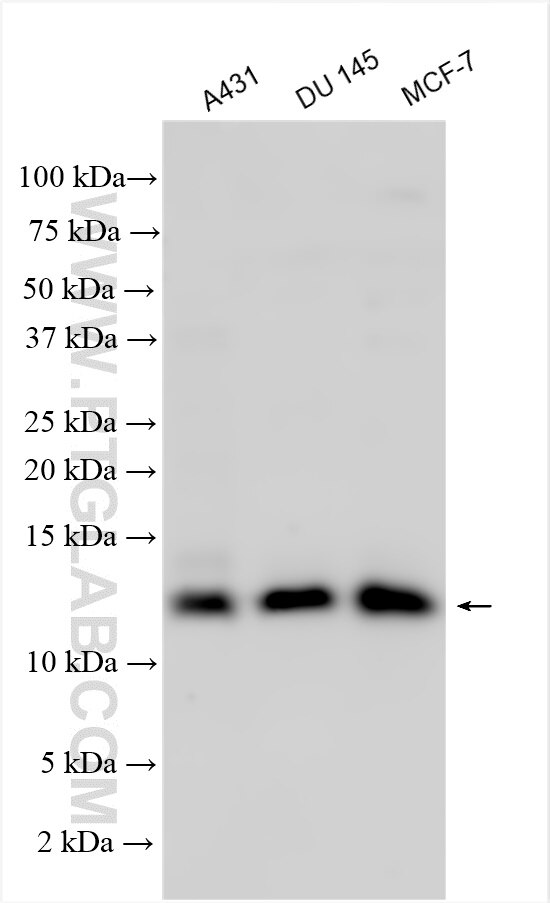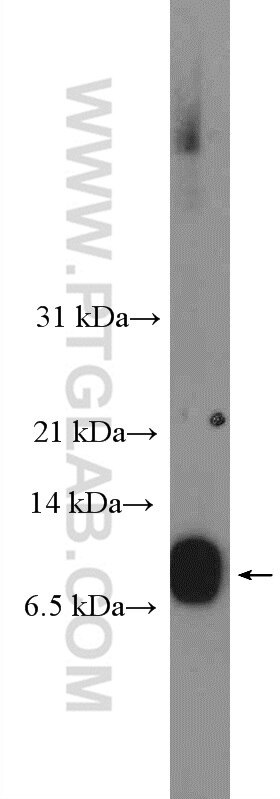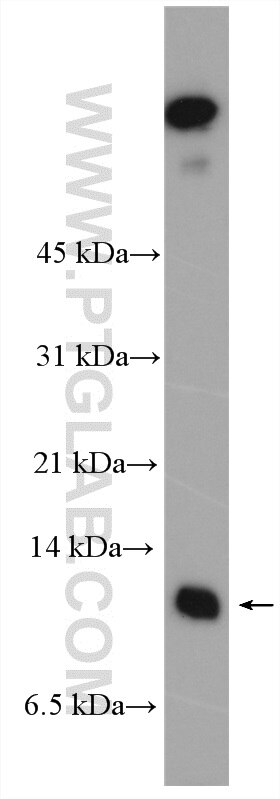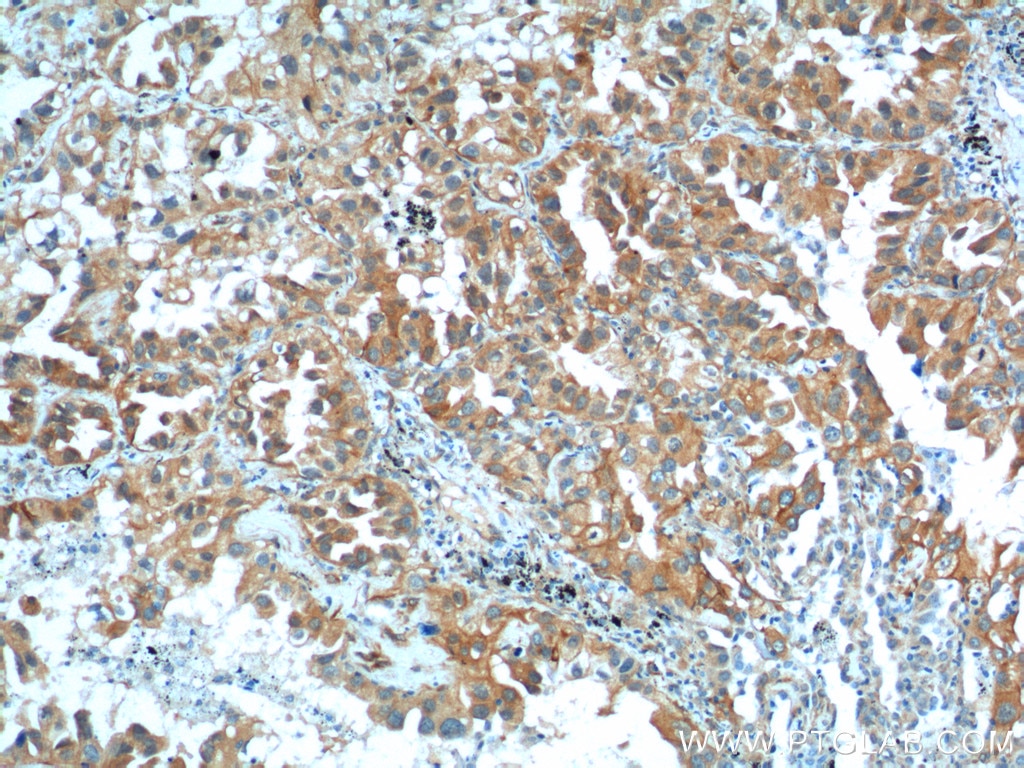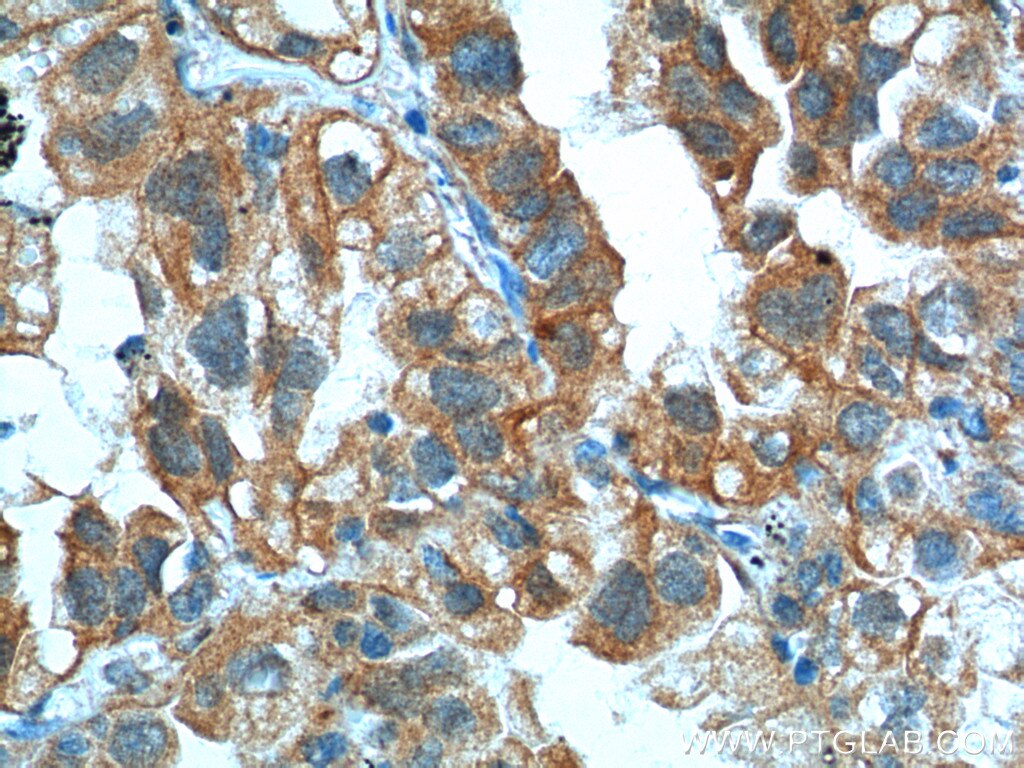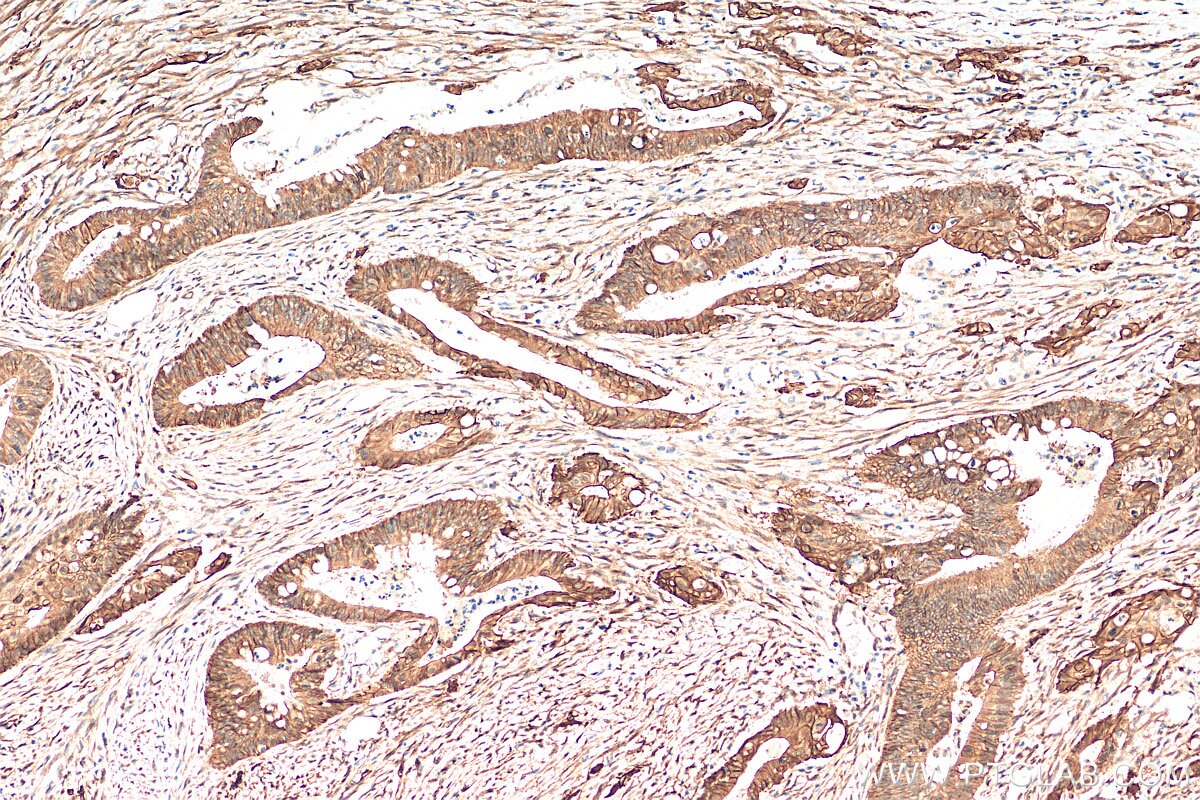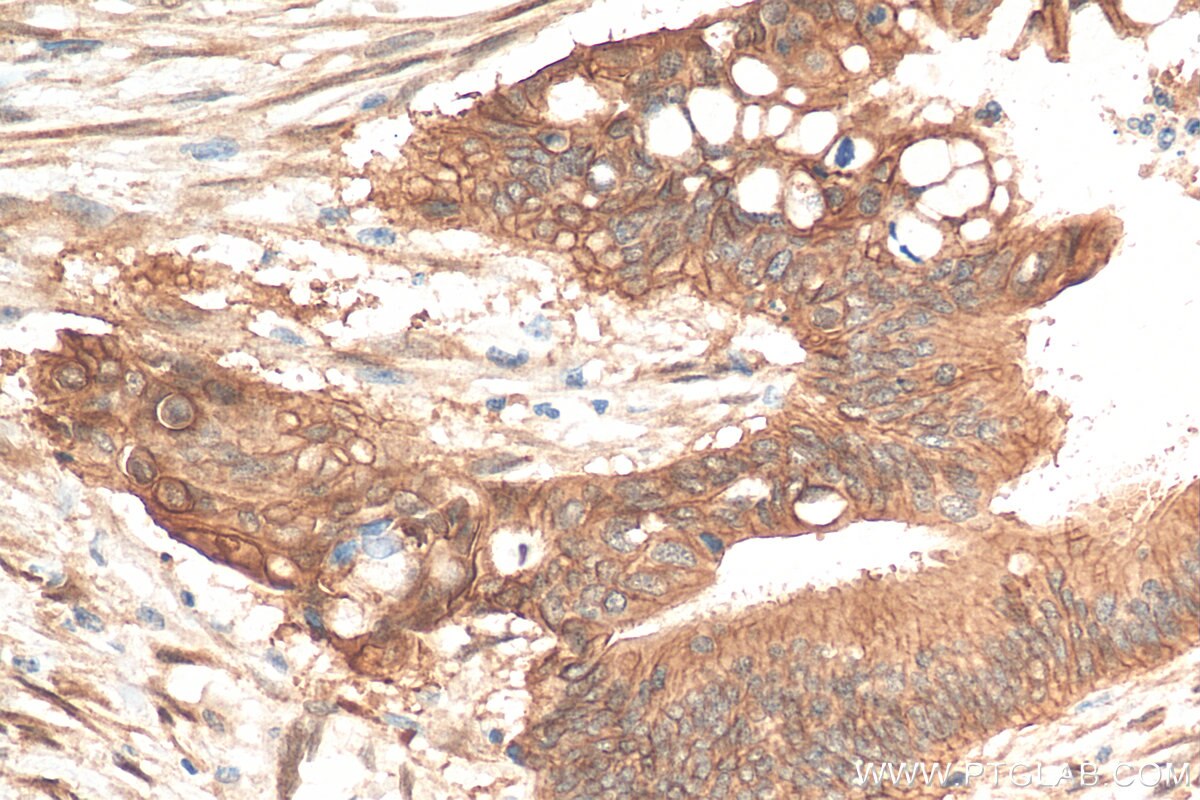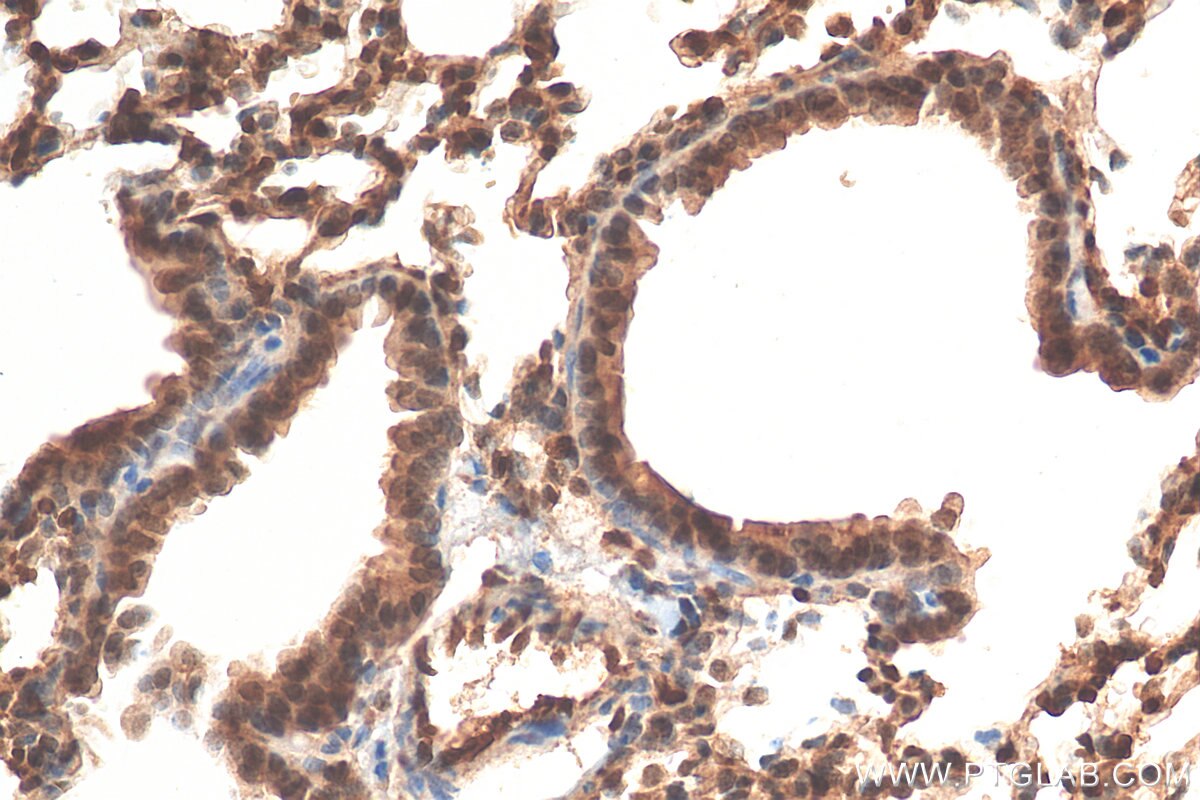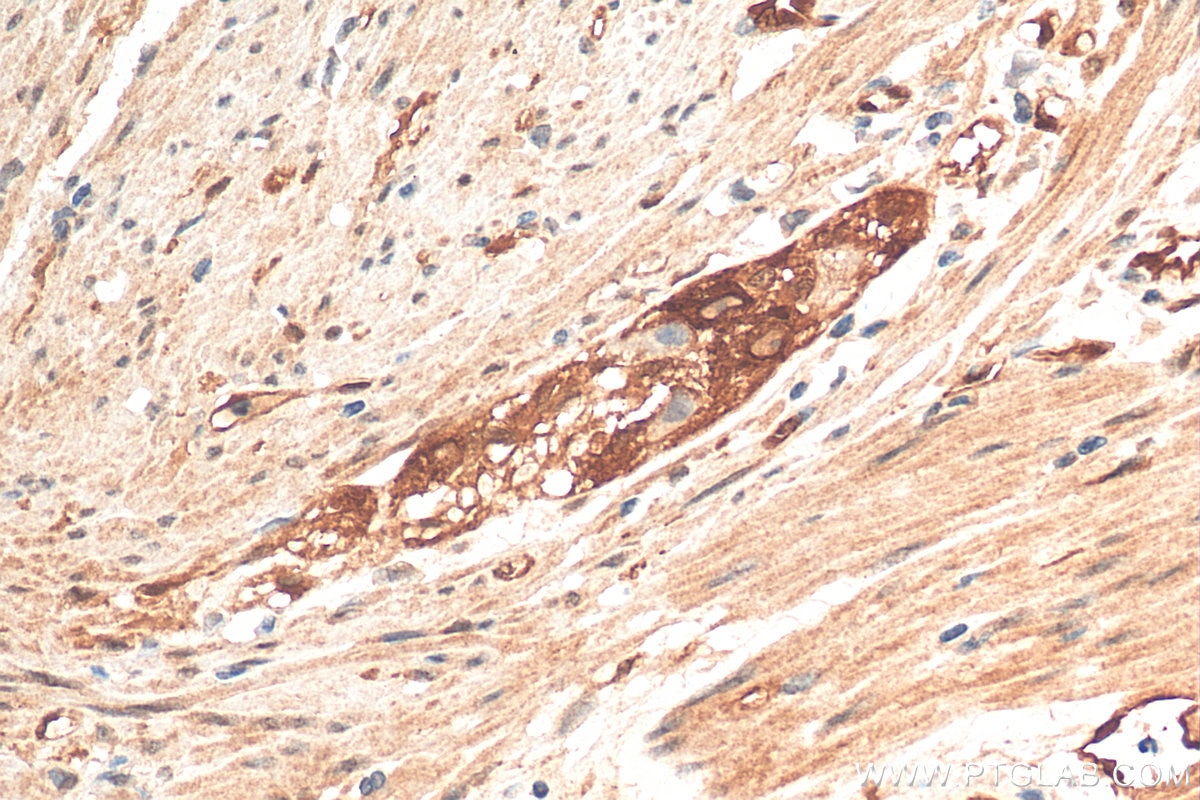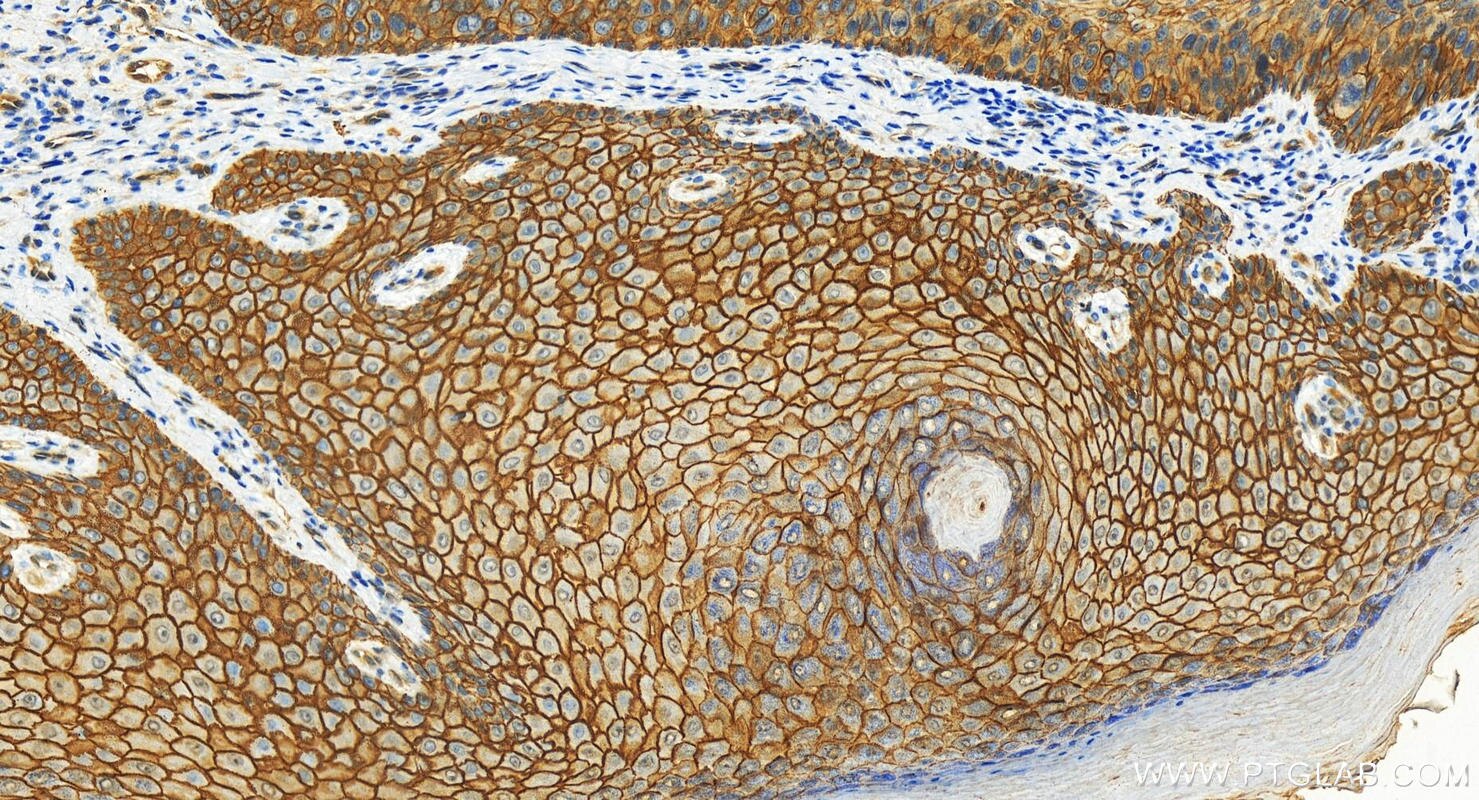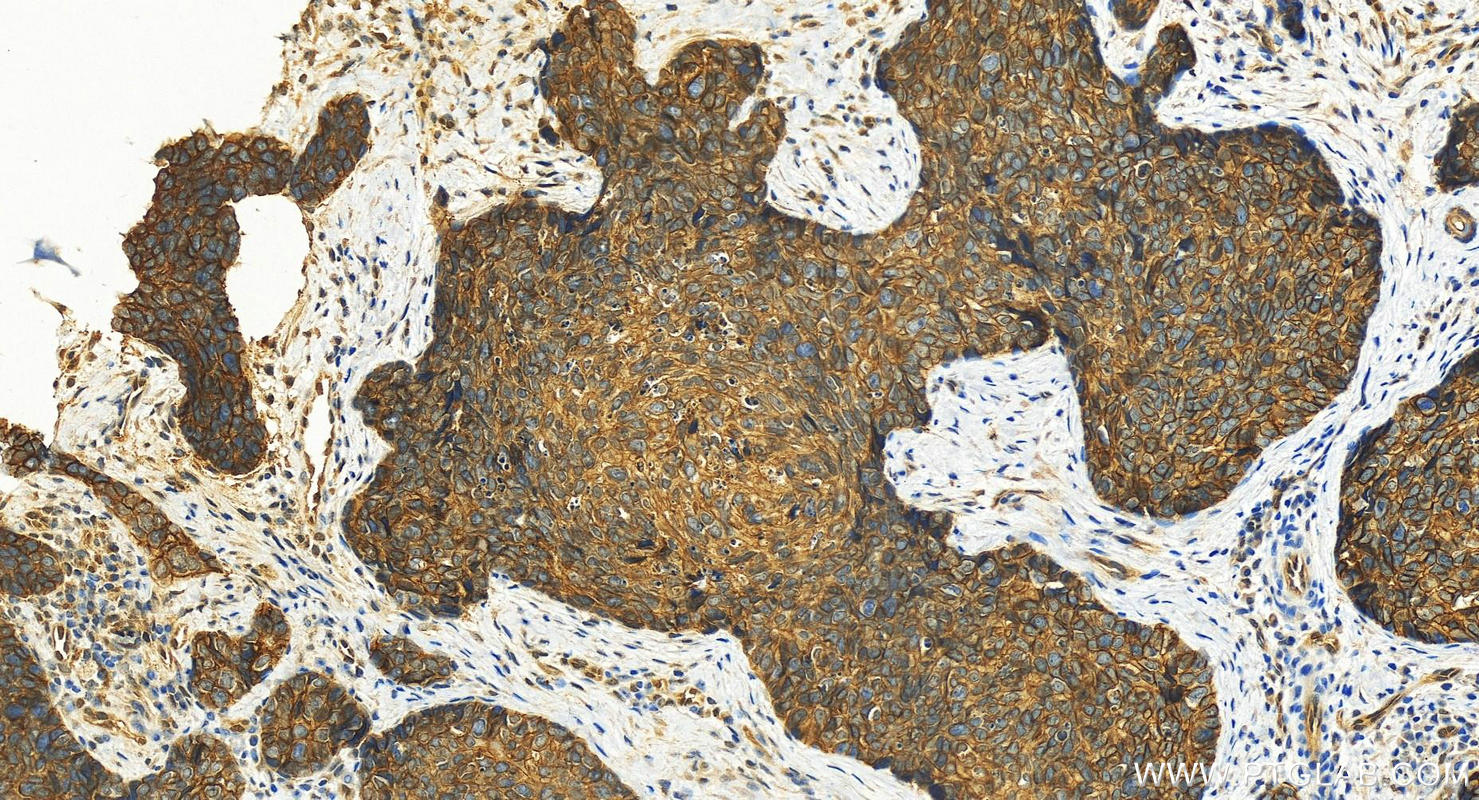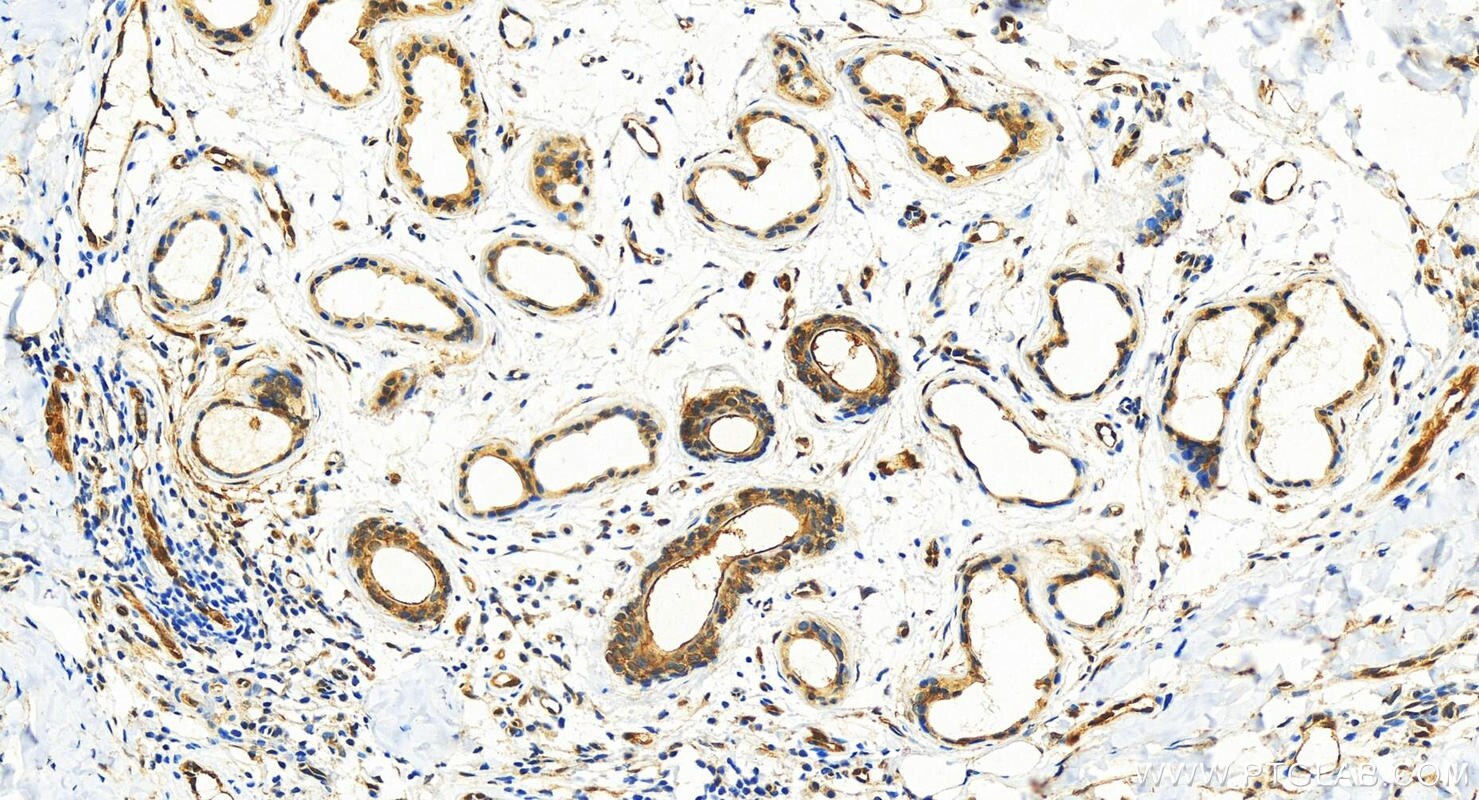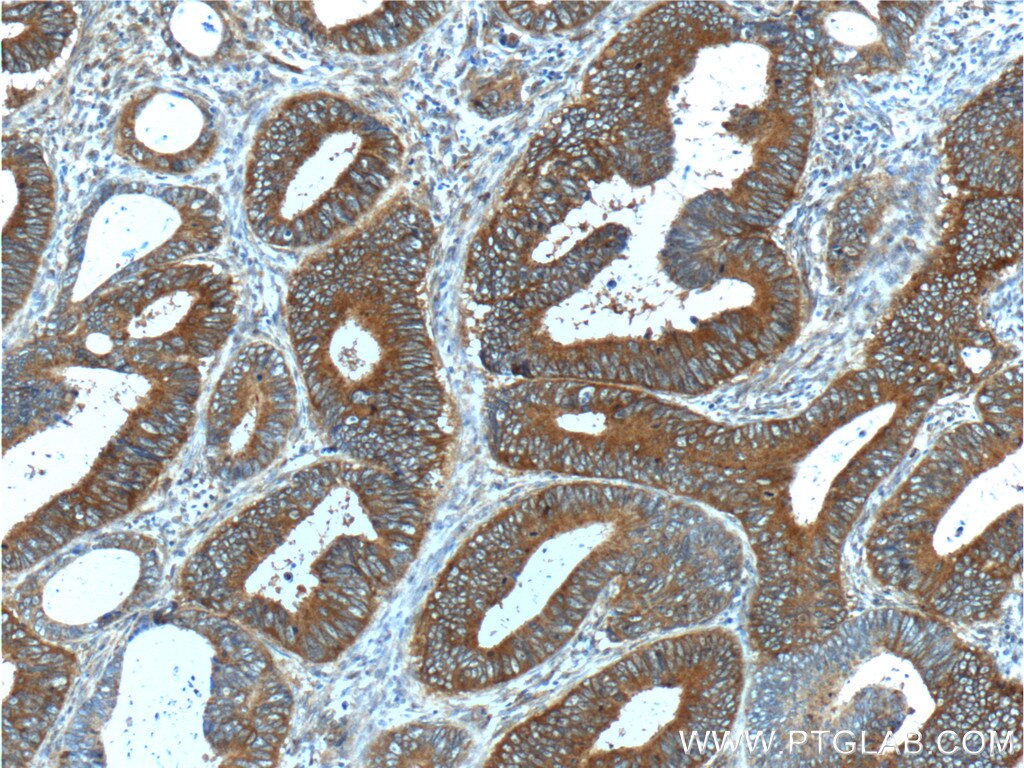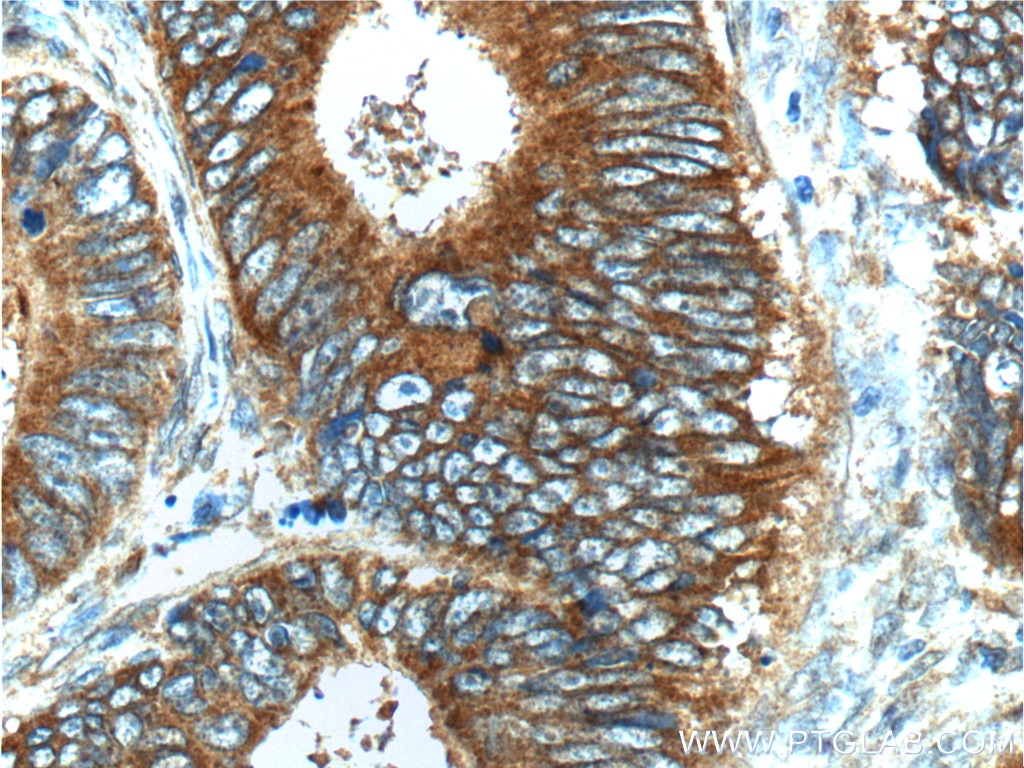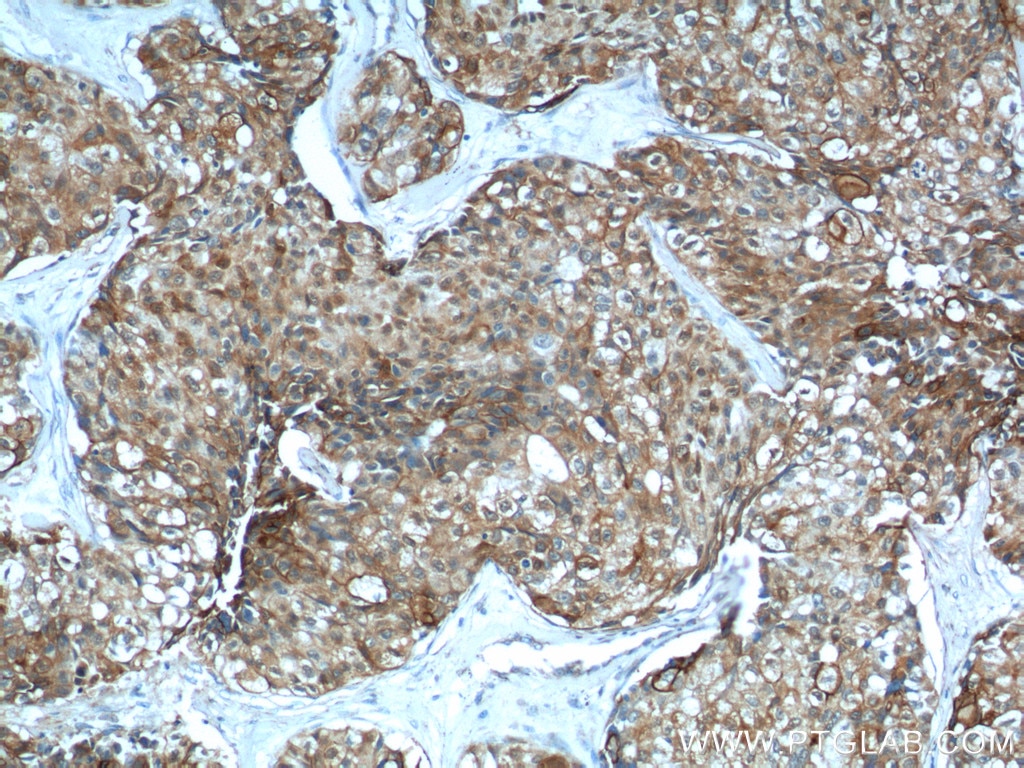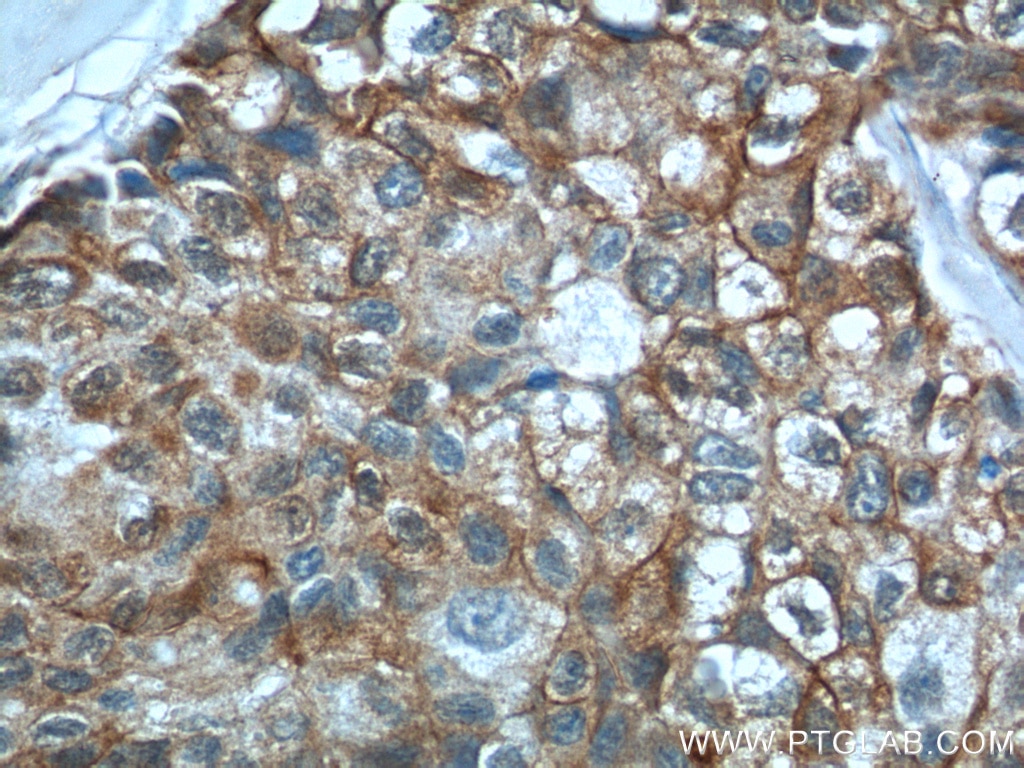- Featured Product
- KD/KO Validated
S100A16 Polyklonaler Antikörper
S100A16 Polyklonal Antikörper für WB, IHC, IF/ICC, ELISA
Wirt / Isotyp
Kaninchen / IgG
Getestete Reaktivität
human, Maus und mehr (1)
Anwendung
WB, IHC, IF/ICC, IP, CoIP, ELISA
Konjugation
Unkonjugiert
Kat-Nr. : 11456-1-AP
Synonyme
Geprüfte Anwendungen
| Erfolgreiche Detektion in WB | A431-Zellen, DU 145-Zellen, MCF-7-Zellen |
| Erfolgreiche Detektion in IHC | humanes Lungenkarzinomgewebe, humanes Kolonkarzinomgewebe, Mauslungengewebe Hinweis: Antigendemaskierung mit TE-Puffer pH 9,0 empfohlen. (*) Wahlweise kann die Antigendemaskierung auch mit Citratpuffer pH 6,0 erfolgen. |
| Erfolgreiche Detektion in IF/ICC | MCF-7-Zellen |
Empfohlene Verdünnung
| Anwendung | Verdünnung |
|---|---|
| Western Blot (WB) | WB : 1:1000-1:6000 |
| Immunhistochemie (IHC) | IHC : 1:50-1:500 |
| Immunfluoreszenz (IF)/ICC | IF/ICC : 1:200-1:800 |
| It is recommended that this reagent should be titrated in each testing system to obtain optimal results. | |
| Sample-dependent, check data in validation data gallery | |
Veröffentlichte Anwendungen
| KD/KO | See 5 publications below |
| WB | See 12 publications below |
| IHC | See 8 publications below |
| IF | See 5 publications below |
| IP | See 2 publications below |
| CoIP | See 1 publications below |
Produktinformation
11456-1-AP bindet in WB, IHC, IF/ICC, IP, CoIP, ELISA S100A16 und zeigt Reaktivität mit human, Maus
| Getestete Reaktivität | human, Maus |
| In Publikationen genannte Reaktivität | human, Maus, Ratte |
| Wirt / Isotyp | Kaninchen / IgG |
| Klonalität | Polyklonal |
| Typ | Antikörper |
| Immunogen | S100A16 fusion protein Ag2023 |
| Vollständiger Name | S100 calcium binding protein A16 |
| Berechnetes Molekulargewicht | 103 aa, 12 kDa |
| Beobachtetes Molekulargewicht | 9-12 kDa |
| GenBank-Zugangsnummer | BC019099 |
| Gene symbol | S100A16 |
| Gene ID (NCBI) | 140576 |
| Konjugation | Unkonjugiert |
| Form | Liquid |
| Reinigungsmethode | Antigen-Affinitätsreinigung |
| Lagerungspuffer | PBS with 0.02% sodium azide and 50% glycerol |
| Lagerungsbedingungen | Bei -20°C lagern. Nach dem Versand ein Jahr lang stabil Aliquotieren ist bei -20oC Lagerung nicht notwendig. 20ul Größen enthalten 0,1% BSA. |
Hintergrundinformationen
S100A16 is a member of the S100 protein family. S100A16 is expressed in a variety of human tissues. S100A16 expression is especially high in tissues rich in epithelial cells. Functionally, S100A16 has been linked to several aspects of tumorigenesis, for example, cell proliferation, differentiation, migration, invasion, and epithelial-mesenchymal transition (EMT).Accordingly, S100A16 has been suggested to have both tumour-promoting and suppressive roles in human cancers. S100A16-mediated cellular functions are suggested to be mediated by the regulation of various signaling pathways/proteins including EMT-related proteins E-cadherin and Vimentin, PI3K-AKT, p53, MMP1-1, MMP-2, MMP-9, JNK/p38, etc. (PMID: 37509106).
Protokolle
| PRODUKTSPEZIFISCHE PROTOKOLLE | |
|---|---|
| WB protocol for S100A16 antibody 11456-1-AP | Protokoll herunterladen |
| IHC protocol for S100A16 antibody 11456-1-AP | Protokoll herunterladenl |
| IF protocol for S100A16 antibody 11456-1-AP | Protokoll herunterladen |
| STANDARD-PROTOKOLLE | |
|---|---|
| Klicken Sie hier, um unsere Standardprotokolle anzuzeigen |
Publikationen
| Species | Application | Title |
|---|---|---|
Int J Biol Sci S100 Calcium Binding Protein A16 Promotes Cell Proliferation by triggering LATS1 ubiquitin degradation mediated by CUL4A ligase to inhibit Hippo pathway in Glioma development
| ||
Cell Mol Life Sci S100A16 promotes acute kidney injury by activating HRD1-induced ubiquitination and degradation of GSK3β and CK1α.
| ||
FASEB J Brain microvascular endothelial cell exosome-mediated S100A16 up-regulation confers small-cell lung cancer cell survival in brain. | ||
Front Cell Dev Biol Calcium Binding Protein S100A16 Expedites Proliferation, Invasion and Epithelial-Mesenchymal Transition Process in Gastric Cancer
| ||
Biomolecules ADAMTS19 Suppresses Cell Migration and Invasion by Targeting S100A16 via the NF-κB Pathway in Human Gastric Cancer. | ||
PLoS One S100A14 Interacts with S100A16 and Regulates Its Expression in Human Cancer Cells. |
